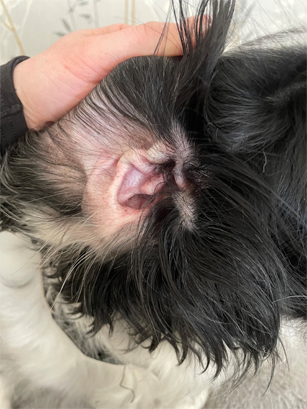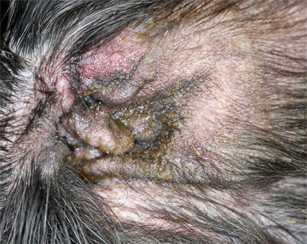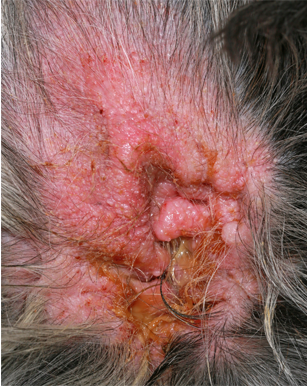Dechra provides solutions for otitis externa in dogs
Otitis externa (OE) is a common reason for a dog to visit a vet practice1. Understanding the cause of the inflammation can prevent your patient from suffering further complications and/or relapses. Not only is it important to identify the primary cause, but it is also essential to consider all factors that influence treatment. This will ensure you manage the acute inflammation in a timely manner and avoid the risk of chronic changes.
Recent interviews with veterinary surgeons - alongside the results of a pan-European veterinary survey2 – inform us that owner communication is an important but sometimes stressful part of the consult. A successful outcome for all parties relies upon teamwork between the veterinary team as well as the dog owner and the dog. Especially as the perceived owner knowledge of ear inflammation is quite low. We refer to this teamwork as a Lifelong Ear Partnership.

The purpose of this article is to provide insights into different types of otitis externa focusing on common causes and presentations. It will also help you understand the value of ear cytology as well as the importance of a tailored treatment that fits all team members.

What is otitis externa?
Otitis externa is defined as an inflammatory condition that affects the external auditory canal, extending from the pinna to the tympanic membrane3. However, in practice, although the physiological changes that occur as part of the inflammatory response (heat, redness, swelling) are important, it is the individual’s clinical response to this that leads to presentation in the veterinary clinic.
Typical clinical signs of otitis externa often include:
- head shaking
- rubbing
- itching
- pain
- malodour

It is important to note that signs can vary according to the type of otitis present. Signs can also be unilateral, or bilateral, which can provide clues with regards to underlying causes.
Although OE is often associated with bacterial and/or fungal infection, it can occur without the involvement of secondary opportunistic pathogens. The initial inflammation associated with otitis externa changes the environment of the ear canal. This then promotes the overgrowth of otic commensals (mainly Staphylococcal and Malassezia spp.) which may lead to an infection.
Access Dechra's award winning 4D ear model
An image can sometimes say more than a thousand words. Our 4D ear model showcases the anatomy of a dog's ear and how it changes from normal to various stages of disease. It facilitates the vet - dog owner communication about the current situation, prognosis, and helps explain the importance of successful product administration.
Visit the 4D-ear model and bookmark it as a favourite.
Making it easier to refer to during client conversations.
Types of otitis externa
Otitis externa can be classified according to the clinical appearance and type of discharge4:

Erythematous
(Red)
Mild erythema of the canine external ear

Erythematoceruminous
(Red and waxy)
Moderate erythema of the canine external ear with thick, brown or yellow-brown discharge

Purulent
(Pus filled)
Severe erythema and possible ulcerations of the canine external ear with purulent exudate
Credit: C. Walker, ThePhotoVet
What are the common causes of otitis externa in dogs?
Otitis externa often has a multifactorial aetiology, which can be divided into primary and secondary causes, alongside predisposing and perpetuating factors:
Primary causes are factors that trigger initial inflammation in the ear
Secondary causes are the infections that might occur because of the primary inflammation
Perpetuating factors are elements that prevent the complete resolution of disease, even where other factors are addressed and treated
Predisposing factors are the features that contribute to the development of otitis externa but would not cause disease alone
When considering the main reasons for ear inflammation, it's crucial to remember that the ear canal has a skin lining. Any disease which affects the skin can also impact the ear. There are several documented primary triggers described in the literature5,6.
Allergy is the most common primary cause and includes reaction to environmental allergens such as pollen and dust mites alongside allergy to certain food ingredients. An allergic dog often presents with generalised dermatosis alongside otic symptoms.

Foreign material in the ear canal. The presence of a lodged grass seed is an example of foreign material which can cause an inflammatory reaction.

Parasites. Mites (most commonly Otodectes cynotis and Demodex spp.) can infest the ear canal and cause inflammation, irritation, and discomfort. Parasitic OE is more common in cats than dogs, but it can affect both species as well as other companion animals such as ferrets.

Endocrine disease can cause OE due to impact on the immune response and skin structure. To familiarise yourself with the most common endocrine disorders which can potentially cause canine OE, visit:




